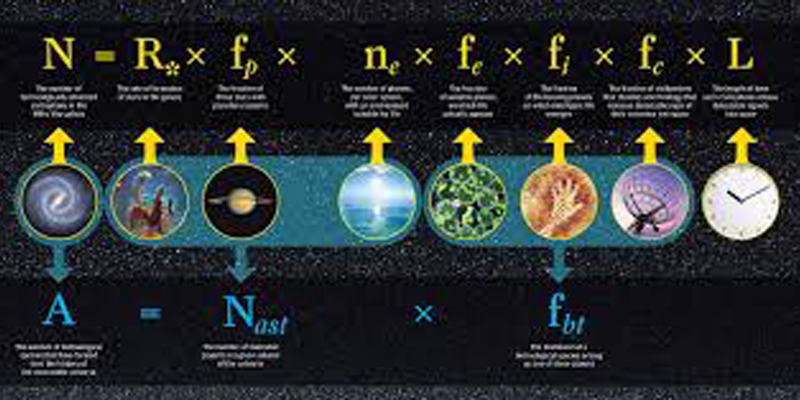
World War II: German Messerschmitt test pilot Hans Fay defects delivering to the Allies the world's first operational jet-powered fighter aircraft on March 31, 1945
World War II: German Messerschmitt test pilot Hans Fay defects delivering to the Allies the world's first operational jet-powered fighter aircraft: On March 31 1945 Messerschmitt Aktiengesellschaft test pilot and technical inspector Hans Fay defected to the Allies at Frankfurt/Rhein-Main Airfield, Frankfurt, Germany.
Hans Fay brought with him a brand-new Messerschmitt Me 262 A-1 twin-engine jet fighter
Fay had been waiting for an opportunity to bring an Me 262 to the Americans, but feared reprisals against his parents. When he learned that the U.S. Army controlled their town, he felt that it was safe to go ahead with his plan.

On March 31st, Fay was ordered to fly one of twenty-two new fighters from the Me 262 assembly factory at Schwäbisch-Hall to a safer location at Neuburg an der Donau, as they were in danger of being captured by advancing Allied forces. His airplane was unpainted other than low visibility Balkenkreuz markings on the wings and fuselage, and standard Luftwaffe markings on the vertical fin. Fay was the fourth to take off, but instead of heading east-southeast toward Neuburg, he flew north-northwest to Frankfurt, arriving there at 1:45 p.m.
During interrogation, Hans Fay said that for acceptance, the production Me 262 was required to maintain a minimum of 830 kilometers per hour (515 miles per hour) in level flight, and 950 kilometers per hour (590 miles per hour) in a 30° dive. The fighter’s cruise speed was 750 kilometers per hour (466 miles per hour).
It was armed with four 30 mm Rheinmetall-Borsig MK 108 autocannons with a total of 360 rounds of ammunition. It could also be armed with twenty-four R4M Orkan 55 mm air-to-air rockets. Two bomb racks under the wings could each be loaded with a 500 kilogram (1,102 pounds) bomb.
Hans Fay’s Messerschmitt Me 262 A-1, WNr. 111711, was transported to the United States and was tested at Wright Field, Dayton, Ohio.
This Day In Aviation / Wikipedia / WW2DB / Silver Hawk Author - Military History Books / Wikipedia
/ German Messerschmitt test pilot Hans Fay defects delivering to the Allies the world's first operational jet-powered fighter aircraft (YouTube) 

Eiffel Tower opens on March 31, 1889
Eiffel Tower opens: On March 31, 1889, the Eiffel Tower is dedicated in Paris in a ceremony presided over by Gustave Eiffel, the tower’s designer, and attended by French Prime Minister Pierre Tirard, a handful of other dignitaries, and 200 construction workers.
In 1889, to honor of the centenary of the French Revolution, the French government planned an international exposition and announced a design competition for a monument to be built on the Champ-de-Mars in central Paris. Out of more than 100 designs submitted, the Centennial Committee chose Eiffel’s plan of an open-lattice wrought-iron tower that would reach almost 1,000 feet above Paris and be the world’s tallest man-made structure. Eiffel, a noted bridge builder, was a master of metal construction and designed the framework of the Statue of Liberty that had recently been erected in New York Harbor.

Eiffel’s tower was greeted with skepticism from critics who argued that it would be structurally unsound, and indignation from others who thought it would be an eyesore in the heart of Paris. Unperturbed, Eiffel completed his great tower under budget in just two years. Only one worker lost his life during construction, which at the time was a remarkably low casualty number for a project of that magnitude. The light, airy structure was by all accounts a technological wonder and within a few decades came to be regarded as an architectural masterpiece.
The Eiffel Tower is 984 feet tall and consists of an iron framework supported on four masonry piers, from which rise four columns that unite to form a single vertical tower. Platforms, each with an observation deck, are at three levels. Elevators ascend the piers on a curve, and Eiffel contracted the Otis Elevator Company of the United States to design the tower’s famous glass-cage elevators.
The elevators were not completed by March 31, 1889, however, so Gustave Eiffel ascended the tower’s stairs with a few hardy companions and raised an enormous French tricolor on the structure’s flagpole. Fireworks were then set off from the second platform. Eiffel and his party descended, and the architect addressed the guests and about 200 workers. In early May, the Paris International Exposition opened, and the tower served as the entrance gateway to the giant fair.
The Eiffel Tower remained the world’s tallest man-made structure until the completion of the Chrysler Building in New York in 1930. Incredibly, the Eiffel Tower was almost demolished when the International Exposition’s 20-year lease on the land expired in 1909, but its value as an antenna for radio transmission saved it. It remains largely unchanged today and is one of the world’s premier tourist attractions.
History Channel / Wikipedia / Encyclopedia Britannica / EPA.gov / Encyclopedia Britannica / The Atlantic
/ Eiffel Tower opens on March 31, 1889 (YouTube) 

Great Britain orders the port of Boston, Massachusetts closed pursuant to the Boston Port Act on March 31, 1774
Great Britain orders the port of Boston, Massachusetts closed pursuant to the Boston Port Act: On this day in 1774, British Parliament passes the Boston Port Act, closing the port of Boston and demanding that the city’s residents pay for the nearly $1 million worth (in today’s money) of tea dumped into Boston Harbor during the Boston Tea Party of December 16, 1773.
The Boston Port Act was the first and easiest to enforce of four acts that together were known as the Coercive Acts. The other three were a new Quartering Act, the Administration of Justice Act and the Massachusetts Government Act.
As part of the Crown’s attempt to intimidate Boston’s increasingly unruly residents, King George III appointed General Thomas Gage, who commanded the British army in North America, as the new governor of Massachusetts. Gage became governor in May 1774, before the Massachusetts Government Act revoked the colony’s 1691 charter and curtailed the powers of the traditional town meeting and colonial council. These moves made it clear to Bostonians that the crown intended to impose martial law.
In June, Gage easily sealed the ports of Boston and Charlestown using the formidable British navy, leaving merchants terrified of impending economic disaster. Many merchants wanted to simply pay for the tea and disband the Boston Committee of Correspondence, which had served to organize anti-British protests. The merchants’ attempt at convincing their neighbors to assuage the British failed. A town meeting called to discuss the matter voted them down by a substantial margin.
Parliament hoped that the Coercive Acts would isolate Boston from Massachusetts, Massachusetts from New England and New England from the rest of North America, preventing unified colonial resistance to the British. Their effort backfired. Rather than abandon Boston, the colonial population shipped much-needed supplies to Boston and formed extra-legal Provincial Congresses to mobilize resistance to the crown. By the time Gage attempted to enforce the Massachusetts Government Act, his authority had eroded beyond repair.
History CHannel / Wikipedia / Encyclopedia Britannica / Yale Law School.edu / Library of Congress
/ Great Britain orders the port of Boston, Massachusetts closed pursuant to the Boston Port Act on March 31, 1774 (YouTube) 

Understanding Military Terminology - Movement to contact
(DOD) A form of the offense designed to develop the situation and to establish or regain contact.
Joint Publications (JP 3-50) Personnel Recovery - Federation of American Scientists

The Old Salt’s Corner
“A Sailors Prayer”
Now I lay me down to sleep,
I pray thee Lord my soul to keep.
Grant no other sailor take
My shoes and socks before I wake.
Lord guard me in my slumber,
And keep my hammock on its number.
May no clues nor lashing break
And let me down before I wake.
Keep me safely in the sight
And grant no fire drill tonight.
And in the morning let me wake,
Breathing scents of sirloin steak.
God protect me in my dreams,
And make this better than it seems.
Grant the time may swiftly fly
When myself shall rest on high.
In a snowy feather bed,
Where I long to rest my head.
Far away from all these scenes
And the smell of half-done beans.
Take me back into the land
Where they don't scrub down with sand.
Where no demon Typhoon blows
Where women wash the clothes.
God thou knowest all my woes,
Feed me in my dying throes.
Take me back, I'll promise then
Never to leave home again.
~ Author unknow
(continued next week)

“I’m Just Sayin”
“Don’t let yesterday take up too much of today.”
“You know everybody is ignorant,
only on different subjects.”
“Everything is changing.
People are taking their comedians seriously
and the politicians as a joke.”
~ Will Rogers

“Thought for the Day”
“I, not events,
have the power to make me happy or unhappy today.
I can choose which it shall be.
Yesterday is dead, tomorrow hasn’t arrived yet.
I have just one day, today,
and I’m going to be happy in it.”
“If a black cat crosses your path,
it signifies that the animal is going somewhere.”
“I find television very educating.
Every time somebody turns on the set,
I go into the other room and read a book.”
~ Groucho Marx

“What I Learned”
“Just because you've always done it that way;
and someone will make a better idiot.”
“Make it idiot proof,
it signifies that the animal is going somewhere.”
“Live and let live.”
~ Anonymous

Second Hand News (Links to Articles from Week 13 - March 25, 2019 - March 31, 2019)
 House Intelligence Committee Rep. Devin Nunes predicts criminal referral delivery as part of an investigation into alleged political bias in the FBI and Justice Department next week
• Trump OK with DOJ releasing Mueller report without White House seeing it, Lindsey Graham says
• Trump suggests Obama White House was behind probe of his campaign
• Israeli PM Netanyahu tells Ilhan Omar: ‘From this Benjamin: It’s not about the Benjamins’
• Chicago FOP calls for investigation into prosecutor who dropped charges against Jussie Smollett
• Mexican government spent $5 million to shelter, feed, protect each caravan that traveled to U.S.
House Intelligence Committee Rep. Devin Nunes predicts criminal referral delivery as part of an investigation into alleged political bias in the FBI and Justice Department next week
• Trump OK with DOJ releasing Mueller report without White House seeing it, Lindsey Graham says
• Trump suggests Obama White House was behind probe of his campaign
• Israeli PM Netanyahu tells Ilhan Omar: ‘From this Benjamin: It’s not about the Benjamins’
• Chicago FOP calls for investigation into prosecutor who dropped charges against Jussie Smollett
• Mexican government spent $5 million to shelter, feed, protect each caravan that traveled to U.S.
No Collusion: 10 anonymously sourced Trump-Russia bombshells that look like busts
• Devin Nunes: No rest until Mueller scope memo released, 'dirty cops' rounded up
• Devin Nunes 'Clinton operatives' responsible for Trump-Russia collusion investigation
• Corsi defied Mueller and won; now he wants Mueller 'to pay'
• More than 27,000 pounds of cocaine seized off U.S. coast
Editor's Picks:
House Intelligence Committee Rep. Devin Nunes: No rest until Mueller scope memo released, 'dirty cops' rounded up
• Devin Nunes 'Clinton operatives' responsible for Trump-Russia collusion investigation
• CNN analyst Mark Geragos said to be Avenatti’s alleged co-conspirator
• The Kavanaugh effect: Kennedy's retirement looms large in gerrymandering case
• More than 27,000 pounds of cocaine seized off U.S. coast
Washington Examiner
 Recused State's Attorney Kim Foxx 'was behind the decision to drop the charges against Jussie Smollett', claims police union source, as it's revealed the Empire star is 'still the subject of a federal probe'
• Deutsche Bank has begun handing over Trump's financial records with them to the House Financial Services Committee as Democrats turn their attention away from Mueller to the president's business deals
• Joe Biden AGAIN says he regrets his role in the Anita Hill hearings when the law professor who accused Clarence Thomas of sexual harassment had to testify 'before a bunch of white guys'
Recused State's Attorney Kim Foxx 'was behind the decision to drop the charges against Jussie Smollett', claims police union source, as it's revealed the Empire star is 'still the subject of a federal probe'
• Deutsche Bank has begun handing over Trump's financial records with them to the House Financial Services Committee as Democrats turn their attention away from Mueller to the president's business deals
• Joe Biden AGAIN says he regrets his role in the Anita Hill hearings when the law professor who accused Clarence Thomas of sexual harassment had to testify 'before a bunch of white guys'
Senate UNANIMOUSLY votes down Alexandria Ocasio-Cortez's Green New Deal 57-0 with high profile Democrats joining Republicans to show their disapproval for the radical plan as she charges the GOP with wrecking the world
• Michael Avenatti admits he's worried at the thought of spending the rest of his life behind bars after being accused of trying to extort Nike out of $25m and embezzling from a client
President Trump to award his eighth Medal of Honor since taking office to an Army Sergeant who died tackling a suicide bomber in Iraq
Ecstatic Trump revels in 'complete exoneration' after Mueller and Attorney General William Barr clear him of Russia collusion AND obstruction
• The Russia collusion hoax was a disgraceful fake news witch-hunt that shames all of Trump’s deranged enemies in the media, the FBI and Hollywood and has probably ensured their worst nightmare - his re-election
• 'Investigate the investigators!' Republicans go on offense targeting Jim Comey, Loretta Lynch, James Clapper and other Russiagate names as White House turns aggressive and Lindsey Graham vows to 'get answers'
• Mueller by the numbers: Bill Barr reveals in his four-page letter that the Russia probe's 19 lawyers issued 2,800 subpoenas and agents executed 500 warrants to get eight convictions so far (but didn't take a position on Trump obstruction)
Daily Mail UK
 And Now the Mueller Backlash Begins (With Trump largely vindicated by the special counsel, chances of impeachment are dimming)
• Erdogan Is Weak. And Invincible. (Turkey’s president has rarely been so unpopular. He’s likely to dominate this week’s local elections anyway)
• China Is Burning Away Its Ecological Future (Chinese cities have a garbage problem — but incineration is no solution)
• Scandinavia Won’t Be Russia’s Next Target
And Now the Mueller Backlash Begins (With Trump largely vindicated by the special counsel, chances of impeachment are dimming)
• Erdogan Is Weak. And Invincible. (Turkey’s president has rarely been so unpopular. He’s likely to dominate this week’s local elections anyway)
• China Is Burning Away Its Ecological Future (Chinese cities have a garbage problem — but incineration is no solution)
• Scandinavia Won’t Be Russia’s Next Target
The Mueller Report Is a Test for the United States (As the world looks on, it’s up to Washington to demonstrate the strength of its institutions)
• The Navy Wanted a New Cyber Official, but a Housing Scandal Got in the Way (Military families complain of appalling living conditions)
• Love Allah, Love China (Chinese Muslims are struggling to follow their faith amid a growing crackdown)
• Modi’s Middle East Deals Snub Iran (India's newly aggressive strategy puts Gulf money and Israeli weapons first)
Foreign Policy
 CORRUPTION CHRONICLES: JUDICIAL WATCH SUES FOR DEPUTY ATTORNEY GENERAL ROD ROSENSTEIN’S COMMUNICATIONS DURING TIME OF COMEY FIRING, MUELLER APPOINTMENT
• Judicial Watch Files Ethics Complaint Over Rep. Adam Schiff’s Contacts with Glenn Simpson and Michael Cohen
• Judicial Watch discusses new anti-Trump/Christopher Steele collusion documents, House Democrats Harass President Trump, & a NEW FISA abuse lawsuit
CORRUPTION CHRONICLES: JUDICIAL WATCH SUES FOR DEPUTY ATTORNEY GENERAL ROD ROSENSTEIN’S COMMUNICATIONS DURING TIME OF COMEY FIRING, MUELLER APPOINTMENT
• Judicial Watch Files Ethics Complaint Over Rep. Adam Schiff’s Contacts with Glenn Simpson and Michael Cohen
• Judicial Watch discusses new anti-Trump/Christopher Steele collusion documents, House Democrats Harass President Trump, & a NEW FISA abuse lawsuit
Judicial Watch Sues DOJ for Records on Effort to Rollback Trump Announcement to Declassify Russia Probe Documents
• Judicial Watch Uncovers DOJ Records Showing Numerous Bruce Ohr Communications with Fusion GPS and Christopher Steele
• Wasteful Spending in Midst of $22 Trillion National Debt - Mariachi Training, Soviet Wine Study
• U.S. Government Media Network Fires Journalists Over Report Critical of Soros
• 702,000 Overstay Visa Nearly Two Decades after Terrorists Did it to Execute 9/11
Judicial Watch

Mr. Answer Man Please Tell Us: Fascinating Facts About The Thesaurus
Writers often turn to a thesaurus to diversify their vocabulary and add nuance to their prose. But looking up synonyms and antonyms in a thesaurus can help anyone - writer or not - find the most vivid, incisive words to communicate thoughts and ideas. Since January 18 is Thesaurus Day, we’re celebrating with these 10 fascinating facts about your thesaurus.
Its name comes from the Greek Word for Treasure.
Most logophiles consider the thesaurus to be a treasure trove of diction, but the word thesaurus really does mean treasure! It derives from the Greek word thésauros, which means a storehouse of precious items, or a treasure.
You can call them Thesaurus or Thesauri.
How do you refer to more than one octopus? People say everything from octopuses, octopi, and octopodes. Similarly, many people have trouble figuring out the correct plural form of the word thesaurus. Though thesauri is technically correct—it attaches a Latin suffix to the Latin word thēsaurus - both thesauri and thesauruses are commonly used and accepted today.
Early Thesauruses were really Dictionaries.
Ask a French scholar in the 16th century to see his thesaurus, and he'd gladly give you a copy of his dictionary. In the early 1530s, a French printer named Robert Estienne published Thesaurus Linguae Latinae, a comprehensive Latin dictionary listing words that appeared in Latin texts throughout an enormous span of history. And in 1572, Estienne's son Henri published Thesaurus Linguae Graecae, a dictionary of Greek words. Although the Estiennes' books were called thesauruses, they were really dictionaries comprised of alphabetical listings of words with their definitions.
A Greek historian wrote the first book of Synonyms.
Philo of Byblos, a Greek historian and grammarian, wrote On Synonyms, a dictionary of synonyms that scholars consider to be the first ancient thesaurus. Dating to the late 1st century or early 2nd century CE, the book lists Greek words that are similar in meaning to each another. Sadly, we don’t know much more about On Synonyms because copies of the work haven’t survived over the centuries.
An early Sanskrit Thesaurus was in the form of a Poem.
In the 4th century CE, an Indian poet and grammarian named Amara Sinha wrote The Amarakosha, a thesaurus of Sanskrit words. Rather than compile a boring list of similar words, Amara Sinha turned his thesaurus into a long poem. Divided into three sections—words relating to the divine, the earth, and everyday life—The Amarakosha contains verses so readers could memorize words easily. This thesaurus is the oldest book of its kind that still exists.

A British doctor wrote the First Modern Thesaurus.
Peter Mark Roget is the British doctor credited with authoring the first modern thesaurus. In 1805, he began compiling a list of words, arranged by their meaning and grouped according to theme. After retiring from his work as a physician in 1852, Roget published his Thesaurus of English words and phrases; so classified and arranged as to facilitate the expression of ideas and assist in literary composition. Today, Roget’s Thesaurus is still commercially successful and widely used. In fact, we celebrate Thesaurus Day on January 18 because Roget was born on this day in 1779.
The Thesaurus has a surprising link to a Mathematical Tool.
The division between “words people” and “numbers peomasiple” is deep-seated. Many mathematicians may try to steer clear of thesauruses, and bibliophiles may avoid calculators, but the thesaurus is actually linked to a mathematical tool. Around 1815, Roget invented the log log slide rule, a ruler-like device that allows users to easily calculate the roots and exponents of numbers. So while the inventor of the thesaurus was compiling words for his tome, he was also hard at work on the log log slide rule. A true jack-of-all-trades.
The Oxford English Dictionary has its own Historical Thesaurus.
In 1965, a professor of English Language at Glasgow University suggested that scholars should create a historical thesaurus based on entries in the Oxford English Dictionary. The project was a massive undertaking, as people from multiple countries worked for 44 years to compile and classify words. Published in 2009, the Historical Thesaurus to the Oxford English Dictionary contains 800,000 words organized by theme and date. The thesaurus covers words and synonyms from Old English to the present day and lets readers discover when certain words were coined and how long they were commonly used.
One artist turned his love of words into a series of Thesaurus paintings.
In 2014, the Jewish Museum in New York showed a survey of conceptual artist Mel Bochner’s art. Bochner had incorporated words and synonyms in his paintings for years—which were collectively referred to as the thesaurus paintings - featuring word paintings and lists of synonyms on canvas. The brightly colored paintings feature different groups of English and Yiddish synonyms. According to Bochner, Vietnam and Iraq war veterans cried after seeing his thesaurus painting Die, which features words and phrases such as expire, perish, succumb, drop dead, croak, go belly up, pull the plug, and kick the bucket.
There's an Urban Thesaurus for all your slang Synonym needs.
Urban Dictionary helps people decipher the latest slang terms, but where should you go when you need a thesaurus of slang? Urban Thesaurus, of course! The site, which is not affiliated with Urban Dictionary, indexes millions of slang terms culled from slang dictionaries, then calculates usage correlations between the terms. Typing in the word money, for example, gives you an eclectic list of synonyms including scrilla, cheddar, mulah, coin, and bling.
Mental Floss
• Quora
• Thesaurus
• Wikipedia
• Fascinating Facts About The Thesaurus (YouTube Search) 

NAVSPEAK aka U.S. Navy Slang
Cake Eater: An officer.
Canoe Club: The United States Navy.
Canoe U: The United States Naval Academy.
Captain's Mast: Navy term for non-judicial punishment under Article 15 of the Uniform Code of Military Justice. Depending on the rank of the commanding officer involved, the name of the procedure may change to Admiral's Mast, OIC's Mast, etc. “Mast” for short.
Cannon balls: Baked, candied apples served to midshipmen at the Naval Academy on special occasions. Twelve are served per table. If one person at the table is willing to eat all 12 apples and succeeds, that person is given the honor of "carry on" (lack of harassment by upper classmen) for the remainder of the semester.
Carrier Strike Group (CSG): See “Battle Group”.
Carry on: An officer's reply to a junior person's call to “attention on deck”, meaning all present rise and come to attention as a sign of respect. “Carry on” allows personnel to continue whatever they were doing. Also see “cannon ball”.
Cell Block 70: The USS Carl Vinson (CVN-70), so called on account of her never ending berthings and overall resemblance to a prison.
CGU-11: Nomenclature for a Seagull to boot sailors. Usually used as part of a goose-chase.

Just for you MARINE
CAX: Combined Arms eXercise. Outdated term, it has since been replaced by the ITX (Integrated Training eXercise).
CBRN: Chemical, Biological, Radiological, and Nuclear. See also NBC.
Campaign Cover: Official term for the green Campaign hat worn by drill instructors and designated rifle range personnel. Occasionally referred to as a “Smokey Bear” for obvious reasons. See also field hat, hat, & smokey bear/brown.
Cannon Cocker: Artilleryman. See also gun bunny and red leg.
Cannon Fodder: Marines regarded merely as material to be expended in war.
Canoe U: Nickname for United States Naval Academy at Annapolis, Maryland. See also South Maryland Small Boat & Barge Institute.
CAR: Short for Combat Action Ribbon.
Captain's Mast: Office Hours afloat. The term “Captain's Mast” is almost universally negative, implying non-judicial punishment. The modern Navy and Marine Corps use the term “Meritorious Mast” to announce any ceremony involving the meritorious award of a higher rank or of a particular recognition or honor. USA & USAF refer to this as “Article 15” hearing.
Carry On: Order to continue after being interrupted. Also music played immediately following playing of “colors” to inform people to resume activities.
CAS: Close Air Support, aircraft fire on ground troops in support of nearby friendly troops.
CASEVAC: CASualty EVACuation, emergency evacuation of injured personnel from combat zone by any modes transport available to nearest triage area, treatment area, or field hospital. As opposed to a MEDEVAC which is the transport from a field hospital to a Medical Treatment Facility.
Casual Company: A holding unit/formation of Marines awaiting one of the following: discharge from the Corps, training (usually at a formal school), or deployment to a unit.
CAX: Combined Arms eXercise. Outdated term, it has since been replaced by the ITX (Integrated Training eXercise).

Naval Aviation Squadron Nicknames
Fleet Air Reconnaissance Squadron 7 (VQ-7) - nicknamed the “Roughnecks”
United States Navy - Fleet Air Reconnaissance, Tinker Air Force Base, Oklahoma - Established July 1, 1968.

Where Did That Saying Come From?

“In the limelight:” Meaning: At the centre of attention.
History: Limelight is an intense white light which is produced by heating a piece of lime in a flame of burning oxygen and hydrogen. The effect was discovered in the 1820s by Goldsworthy Gurney and the application of the process to create a bright light was developed by Thomas Drummond around 1825. It was widely used in 19th century theatres to illuminate the stage and was first used in a public theatre at Covent Garden in London in 1837.
Clearly, actors who were the centre of attention on stage being said to be in the limelight. The figurative use, to people or things that were the centre of attention outside the world of theatre, came into use around the turn of the 20th century; for example, this piece from The New York Times, July 1902:
“William S. Devery was in the limelight last evening. Tens of thousands of people of the district crowded the streets in the neighborhood and shouted the name of the ex-Chief of Police of New York.”
Phrases.org UK

Science & Technology

Collecting clean water from air, inspired by desert life
• NASA spaceship closes in on distant world
• Indonesian tsunami volcano lost two-thirds of its height
• Scientists model Mercury's glaciers
• Moderate drinking not harmful for older patients with heart failure
• Using ablation to examine the structure of artificial neural networks
Phys.org / MedicalXpress / TechXplore

Bizarre News (we couldn’t make up stuff this good – real news story)

Alien Hunters, Stop Using the Drake Equation
Paul Sutter is an astrophysicist at The Ohio State University and the chief scientist at COSI science center. Sutter is also host of “Ask a Spaceman” and “Space Radio” and leads AstroTours around the world. Sutter contributed this article to Space.com's Expert Voices: Op-Ed & Insights.
For the precocious hunter of off-Earth life, the Drake equation is the ever-ready, go-to toolkit for estimating just how (not) lonely humans are in the Milky Way galaxy. The equation was developed by astronomer Frank Drake in 1961 in a slight hurry so that attendees of an upcoming conference would have something to confer about, and it breaks down the daunting question “Are we alone?” into more manageable, bite-size chunks.
The equation starts with some straightforward concepts, such as the rate of star formation and the fraction of stars hosting planets. But it quickly moves into tricky terrain, asking for numbers like what fraction of those planets that could host life actually end up evolving intelligent species and what fraction of those planets blast out friendly signals into the cosmos, inviting us Earthlings to a nice little chat. [10 Exoplanets That Could Host Alien Life].
The end result is supposed to be a single value (or, at worst, a range of values) that predicts the total number of intelligent and conversation-ready species in the galaxy. And if that seems a little unsettlingly bold, then at the very least, the Drake Equation serves as a philosophical device for instigating conversation. It also frames a proper scientific discussion about the ultimate question of finding and talking to alien species in the galaxy.
Except that it fails on both counts.

Know thine errors
The Drake equation is simple, but deceptively so. Frank's original recipe had only seven ingredients, and further enhancements from other researchers haven't drastically changed that number. So, you might naively think you need only measure or guess a heavy handful of parameters and you're good to go.
But reality isn't that simple. Estimates and measurements always have uncertainties. This concept is absolutely critical for scientific inquiry: What you know is far less important than how well you know it. The real meat of any scientific discussion is digging into the uncertainties and how they're estimated. To justify a bold claim, you need a very tight knowledge of the uncertainty. And to overthrow the claim, you don't have to attack it directly; you can simply call into question a statement's precision.
For the Drake equation, we simply have no idea about the uncertainties attached to any of the parameters. What fraction of planets where life could get started eventually develop life? Zero percent? 100 percent? Somewhere in between? Is it 50 percent plus or minus 5 percent? Or plus or minus 25 percent? Or plus 5 percent and minus 25 percent?
And it takes only one unknown uncertainty to sink the whole enterprise. You may chip away at the Drake equation over the course of decades, taking careful observation after careful observation, measuring star-formation rates, hunting for liquid water on planetary surfaces, the works. You may think you're making good progress on nailing down this prediction, but as long as a single parameter still has unknown uncertainty, you haven't made any progress.
That single unknown can undo the hard work poured into the entirety of the rest of the equation. Until you know all of it, you know none of it.
To produce a proper estimate using the Drake equation, you can't just plug in guesses; you have to provide ranges for each guess, essentially doubling your work. And because most of the parameters aren't even based on measurable quantities, the best you can do is throw your hands up in the air. [The Drake Equation Revisited: Interview with Planet Hunter Sara Seager].

Missing the point
Every few months, a new paper involving some variant of the Drake equation claims to put some "reasonable" estimates on the parameters and produce an answer. Sometimes, the papers claim that the galaxy is teeming with thousands of intelligent civilizations. Sometimes, the research says we're completely alone. When Drake and colleagues first turned the crank, they tossed out estimates of anywhere between 1,000 and 100,000,000 such civilizations. That's … not very helpful.
The Drake equation is simply a way of chopping up our ignorance, stuffing it into a mathematical meat grinder and making a sausage-guess. It doesn't have any predictive power greater than randomly pulling a number out of a hat. What if you didn't accurately estimate one of your uncertainties? The answer isn't reliable. What if you missed a parameter, some crucial element in the steps from stars to sentience? The answer isn't reliable. What if you had too many parameters, introducing an element that turned out not to matter? The answer isn't reliable.
The Drake equation makes a significant number of assumptions, and until those assumptions are verified, we can't trust the calculation's results.

Let's talk
We can't treat the Drake equation as a physics equation; that is, we can't use it the same way we can handily use something like Newton's second law or the equations from general relativity or Maxwell's equations for electromagnetism. That's fine. Perhaps the Drake equation's power is more as a philosophical treatment, to help guide our thinking and help us navigate the murky waters of a deep and fundamental existential question.
But what is the utility of introducing the Drake equation into such philosophical discussions? Do we really advance or sharpen our thinking? What is the advantage to replacing one big unknowable (the number of intelligent species Out There) with many smaller unknowables that aren’t easier to solve? Yes, breaking down a big problem into smaller ones is a common tactic in science. But that only works if the smaller problems are all individually easier to tackle.
There's a risk we will spend more time unhelpfully discussing the parameters of the model and less time gainfully trying to go out there and actually search for life. Debating over the particular value of, say, the number of life-bearing planets that will give rise to intelligence (a number which must be 100 percent made up) will not give us a clearer picture of the chances of chatting with another intelligent species — instead, we just end up clouding our perspective through an intrinsically warped formulation.
There are, today, ongoing searches to hunt for life outside the Earth. Planned missions to sample the icy moons of the outer worlds, moons which harbor vast liquid water oceans. Exoplanet hunters developing the technology to tease out the hints of biosignatures in alien worlds. Did the Drake equation, in any of its formulations, help frame or advance or assist those missions?
While the Drake equation may have spurred the early scientific discussion of the search for extraterrestrial intelligence, it doesn't have much value beyond that. We can't use to it further our understanding, and we can't use it to properly guide our thinking. The huge uncertainties in the parameters, the unknown ways those uncertainties mix, and the absolute lack of any guidance in even choosing those parameters robs it of any predictive power. Prediction is at the heart of science. Prediction is what makes an idea useful. And if an idea isn’t useful, why keep it around?
Live Science (12/27/2018) 


SONG FACTS


“Get Free” - Lana Del Rey
Album: Lust for Life
Released 2017 
Famous Cases of Alleged Music Plagiarism
Lana Del Rey vs. Radiohead (2018)
Lana Del Rey “Get Free” 
Co-written by Rick Nowels, Kieron Menzies - (sung by Lana Del Rey (2017)
Radiohead “Creep” (1992) 
Co-written by Albert Hammond, Mike Hazlewood - (sung by Radiohead (1992)
Nothing really comes from scratch anymore, and music is no exception. The first thing bands talk about when they form are their influences, and they typically start off by (and never really stop) playing other people’s music.
Entire genres, like folk, blues, and hip-hop, are based upon liberal borrowing out of either tradition or necessity. Simply put, every artist you love, no matter how unique, innovative, and game changing they may be, stands on the proverbial shoulders of giants.
With that in mind, famous instances of alleged music plagiarism. Some cases went to court. Others got shrugged off. Sometimes we think we’re listening to the same song twice. Other times we just don’t hear it that way.
The Case: The closing track on Del Rey’s 2017 album Lust for Life drew the attention of Radiohead’s representation, who apparently felt it sounded a little too much like the alt-rock band’s breakthrough smash. After rumors began to circulate in British press that a court battle was imminent, the singer confirmed the apparent lawsuit but denied any accusations of plagiarism. “Although I know my song wasn’t inspired by Creep, Radiohead feel it was and want 100% of the publishing,” she shared via Twitter on January 7th. “I offered up to 40 over the last few months but they will only accept 100. Their lawyers have been relentless, so we will deal with it in court.” Later that day, Del Rey told fans attending her concert in Denver that the song could be removed from future copies of Lust for Life if she and the plaintiffs fail to reach a compromise.
On January 9th, though, Radiohead issued a statement refuting the supposed suit. A rep for Warner/Chappell admits to talking with Del Rey’s team over the tracks, but says no legal action has been initiated. “As Radiohead’s music publisher, it’s true that we’ve been in discussions since August of last year with Lana Del Rey’s representatives”, the statement read. “It’s clear that the verses of ‘Get Free’ use musical elements found in the verses of ‘Creep’ and we’ve requested that this be acknowledged in favor of all writers of ‘Creep.’ To set the record straight, no lawsuit has been issued and Radiohead have not said they ‘will only accept 100 percent’ of the publishing of ‘Get Free.'”
Ironically, Radiohead themselves were accused of plagiarizing what has since become their signature song. Soon after “Creep” was released in 1992, the band was allegedly sued by Albert Hammond (father of Strokes guitarist Albert Hammond Jr.) and Mike Hazlewood over similarities to their song “The Air That I Breathe”, which had been a hit for the Hollies in 1974. The case was settled out of court, and today both Hammond and Hazlewood have a credit on the song.
The Verdict:The case has yet to go to trial, and to date no settlement has been reached between the two parties.
Why It Matters: Some artists have spoken out against the potential suit, including English musician Owen Pallett, who alluded to the chord progression in question - commonly known as I-III-IV-iv - as being standard in popular music. Rather than blame Radiohead directly, he was quick to note “this just might be their lawyers being lawyers.”
Lana Del Rey sings about freeing herself from a negative mindset where she was playing someone else's game rather than living her own life. The liberating place she now finds herself has given the songstress a lust for life.
The track originally had a different title, and much more personal lyrics. “That song started out really revealing”, Del Rey told the BBC. “I wanted to summarise my whole experience over the last six years; and then I realized, I don't want to reveal everything.”
Having got the initial version “out of my system”, Del Rey deleted the recording “then started from scratch”.
“I think it would have been hard for me to do interviews if I'd said a couple of particular things that I was thinking of”, she Del Rey said of the original version. “Kind of the way 'Ultraviolence' did. It was harder to promote that record.” (She is referencing the song's key line, “He hit me and it felt like a kiss”).
The more vague and hopeful re-recorded version ends with Del Rey referencing Neil Young: “I want to move out of the black, into the blue.”
Radiohead sued Lana Del Rey over the similarities between this song and their breakthrough hit 'Creep'. Del Rey tweeted: “It's true about the lawsuit. Although I know my song wasn't inspired by Creep, Radiohead feel it was and want 100% of the publishing - I offered up to 40 over the last few months but they will only accept 100. Their lawyers have been relentless, so we will deal with it in court.”
Hours later, during a gig, Del Rey warned fans that “Get Free” may be removed from her Lust For Life album because of Radiohead's plagiarism claim. ‘Regardless of what happens in court, the sentiment that I wrote in that particular song... was my statement for the [album], my personal manifesto, my modern manifesto”, she said. “I just want to let you know... that I am really going to strive for [those sentiments], even if that song is not on future physical releases of the record.”
Radiohead's music publisher, Warner Chappell denied they'd sued Del Rey, stating: “It's clear that the verses of 'Get Free' use musical elements found in the verses of 'Creep' and we've requested that this be acknowledged in favour of all writers of 'Creep'. To set the record straight, no lawsuit has been issued and Radiohead have not said they 'will only accept 100' of the publishing of 'Get Free'”.
Lana Del Rey confirmed while performing at Lollapalooza Sao Paulo 2018 on March 25, 2018 that her legal battle with Radiohead regarding this song had been resolved. She told the audience: “I mean now that my lawsuit's over, I guess I can sing that song any time I want, right?”
Lana Del Rey, official website / Rolling Stone / COS /
Billboard / All Music / Song Facts / Lana Del Rey
Image: “Lust for Life (album)” by Lana Del Rey

Trivia
● The creators of 'South Park' and Avenue Q wrote a musical play with a satirical religious theme that won nine Tony Awards, including Best Musical of 2011. Name this show, described as "God's favorite musical."
Answer to Trivia
● True or false: Africa is so large that China, India, Europe and the U.S.A. could all fit within.
Answer to Trivia
● What is the term for music gradually becoming louder?
Answer to Trivia
● Three Great Greeks: Plato, Pythagoras and Socrates - rank them in order, oldest first.
Answer to Trivia

A Test for People Who Know Everything
From the Jeopardy Archives Category - “OH MY GODS!” ($200)
“Roman emperor Augustus claimed descent from this Olympian & sun god.”
● Answer for People Who Do Not Know Everything, or Want to Verify Their Answer Encyclopedia Britannica
From the Jeopardy Archives Category - “OH MY GODS!” (DD: $600)
“This Roman god has his own fountain in Madrid.”
● Answer for People Who Do Not Know Everything, or Want to Verify Their Answer Encyclopedia Britannica
From the Jeopardy Archives Category - “OH MY GODS!” ($1,000)
“This god of fire & patron of craftsmen was really lame... really.”
● Answer for People Who Do Not Know Everything, or Want to Verify Their Answer Encyclopedia Britannica
Answer to Last Week's Test
From the Jeopardy Archives Category - “THE HUMAN BODY” ($200)
“The radius, ulna & humerus all converge at this joint.”
● Answer: “The Elbow”. Wikipedia.org
From the Jeopardy Archives Category - “THE HUMAN BODY” ($600)
“The strongest tendon in the body, it's named for the king of the Myrmidons.”
● Answer: The Achelles Tendon. MebMD
From the Jeopardy Archives Category - “THE HUMAN BODY” ($1,000)
“The meninges are membranous envelopes whose job is to protect both the brain & this.”
● Answer: The Spinal Cord. Encyclopedia Britannica

Joke of the Day
“A Lesson In Morals”

A Lesson In Morals
One day at the end of class, little Johnny's teacher asks the class to go home and think of a story to be concluded with the moral of that story. The following day the teacher asks for the first volunteer to tell their story.
Little Suzy raises her hand. “My dad owns a farm and every Sunday we load the chicken eggs on the truck and drive into town to sell them at the market. Well, one Sunday we hit a big bump and all the eggs flew out of the basket and onto the road.”
When the teacher asked for the moral of the story, Suzy replied, "Don't keep all your eggs in one basket.”
Little Lucy went next. “My dad owns a farm too. Every weekend we take the chicken eggs and put them in the incubator. Last weekend only eight of the 12 eggs hatched.”
Again, the teacher asked for the moral of the story.
Lucy replied, “Don't count your chickens before they hatch.”
Next up was little Johnny. “My uncle Ted fought in the Vietnam war, and his plane was shot down over enemy territory. He jumped out before it crashed but could only take a case of beer, a machine gun and a machete. On the way down, he drank the case of beer. Then he landed right in the middle of 100 Vietnamese soldiers. He shot 70 with his machine gun, but then he ran out of bullets! So he pulled out his machete and killed 20 more. Then the blade on his machete broke, so he killed the last ten with his bare hands.”
The teacher looked a little shocked. After clearing her throat, she asked “What possible moral there could be to this story?”
“Well”, Johnny replied, “Don't f**k with Uncle Ted when he's been drinking.”






































